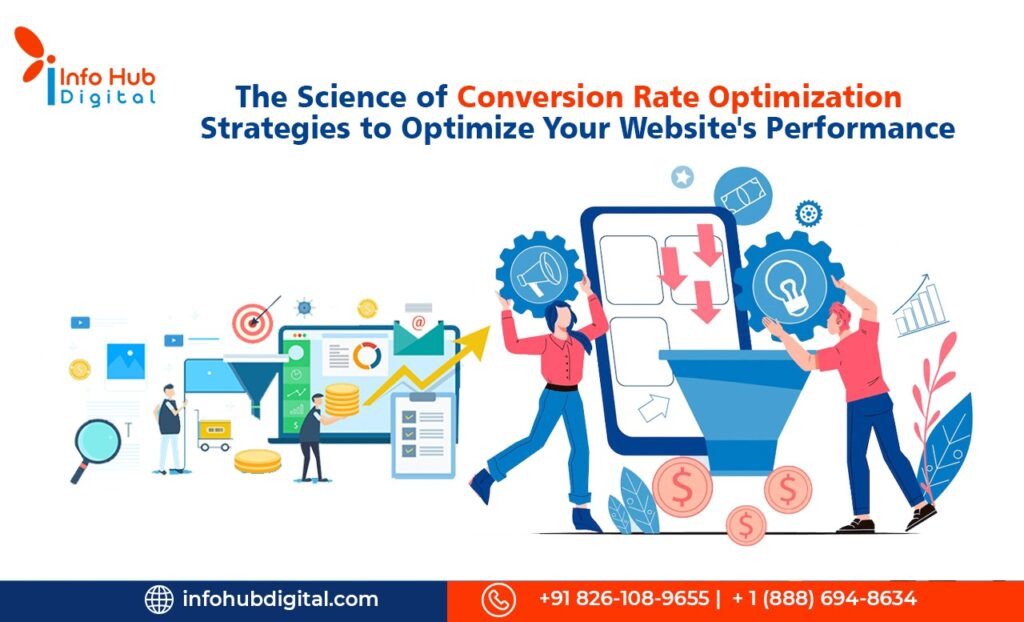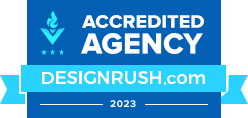Table of Contents
A Comprehensive Guide to Boosting Conversions and Maximizing ROI
In today’s competitive digital landscape, driving traffic to your website is just the first step. To truly succeed, you need to convert those visitors into customers or leads. This is where Conversion Rate Optimization (CRO) comes into play. CRO is the art and science of improving the percentage of website visitors who take desired actions, such as making a purchase or filling out a form. In this comprehensive guide, we’ll explore the science behind CRO and share effective strategies to optimize your website’s performance, boost conversions, and maximize your return on investment (ROI).
Section 1: Understanding Conversion Rate Optimization (CRO)
To lay the foundation, let’s start by understanding the concept of Conversion Rate Optimization (CRO) and its importance in the digital marketing landscape.
- 1.1 Defining Conversion Rate Optimization (CRO): CRO is the systematic process of improving the conversion rate of a website or landing page. It involves analyzing user behavior, identifying barriers to conversion, and implementing data-driven strategies to optimize the user experience and encourage desired actions.
- 1.2 The Importance of CRO: CRO is essential for maximizing the effectiveness of your website and marketing efforts. By increasing your conversion rate, you can generate more revenue, lower customer acquisition costs, and achieve a higher ROI.
Section 2: The Science Behind Conversion Rate Optimization
- 2.1 User Behavior Analysis: Understanding user behavior is a fundamental aspect of CRO. By analyzing website analytics, heatmaps, and user recordings, you can gain valuable insights into how visitors navigate your site, identify areas of friction, and uncover opportunities for improvement.
- 2.2 A/B Testing: A/B testing is a scientific method used in CRO to compare two versions of a webpage or element to determine which one performs better. By testing different variations and measuring their impact on conversion rates, you can make data-driven decisions to optimize your website.
Section 3: Strategies for Effective Conversion Rate Optimization
- 3.1 Clear and Compelling Call-to-Actions (CTAs): Design persuasive CTAs that clearly communicate the value proposition and encourage visitors to take action. Use compelling copy, contrasting colors, and strategic placement to capture attention and guide users towards conversion.
- 3.2 Streamlined User Experience (UX): Optimize your website’s UX by simplifying navigation, reducing clutter, and improving page load speed. A seamless and intuitive user experience enhances engagement and increases the likelihood of conversion.
- 3.3 Mobile Optimization: With the increasing use of mobile devices, it’s crucial to optimize your website for mobile users. Ensure responsive design, fast loading times, and easy navigation to provide a seamless mobile experience and capture conversions on all devices.
- 3.4 Social Proof and Trust Signals: Incorporate social proof elements, such as testimonials, reviews, and trust badges, to build trust and credibility with your audience. Positive social signals can instil confidence in visitors, leading to higher conversion rates.
- 3.5 Persuasive Copy and Compelling Content: Craft persuasive copy and compelling content that highlights the benefits of your products or services. Use persuasive storytelling, clear value propositions, and customer-centric language to engage visitors and encourage conversions.
- 3.6 Optimized Forms: Streamline your forms by reducing the number of fields and minimizing friction. Use clear labels, validation cues, and progress indicators to guide users through the form completion process and increase form submissions.
Section 4: Analyzing and Iterating for Ongoing Optimization
- 4.1 Data-Driven Analysis: Continuously monitor and analyze data to gain insights into the effectiveness of your CRO strategies. Leverage tools like Google Analytics, heatmaps, and user recordings to identify areas of improvement and uncover new opportunities.
- 4.2 Iterative Optimization: CRO is an ongoing process of iterative optimization. Test, measure, and refine your strategies based on data and user feedback. Implement changes gradually and monitor their impact on conversion rates to continuously improve your website’s performance.
Conclusion
Conversion Rate Optimization (CRO) is a powerful discipline that can significantly impact your online success. By applying the science of CRO and implementing effective strategies, you can optimize your website’s performance, boost conversions, and achieve a higher ROI. Remember to analyze user behavior, conduct A/B tests, and focus on strategies like persuasive CTAs, streamlined user experience, mobile optimization, social proof, persuasive copy, and optimized forms. Embrace the science of CRO, and unlock the secrets to driving more revenue and growing your business online.
Ready to unlock the full potential of Conversion Rate Optimization (CRO)? Contact Info Hub Digital, a leading digital marketing agency specializing in CRO, and let our experts help you optimize your website for maximum conversions. Boost your revenue and achieve a higher ROI with our data-driven CRO strategies. Contact us today and take your digital success to the next level!







